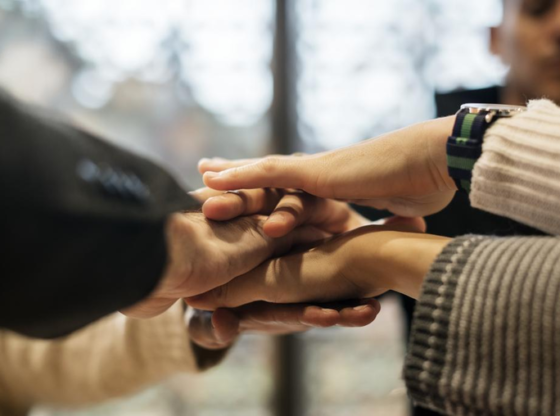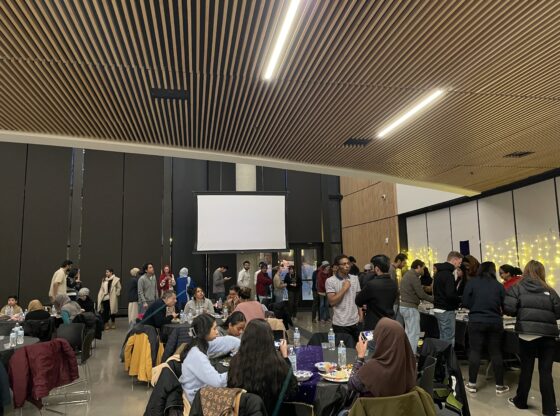Over 40 deaths have occurred in ICE detention centers all over America since 2018. This problematic situation is a result of the horrific living conditions detainees must tolerate while they await deportation. Their human rights are being violated, and the atrocities happening right in front of us should push our government to change.
The number of deaths might seem insignificant to some but when we remind ourselves of the reasons why detention centers were created, it’s very clear that there is a violation. In theory, immigration detention centers are meant to hold, process and prepare individuals for possible deportation. They are supposed to be civil in nature, not punitive.
The American immigration system, however, is forcing detainees to live in overcrowded centers with a lack of adequate health care, nutrition, protection and support for case preparation. The inaccessible location of centers impedes them from meeting face to face with a judge or even an attorney, which causes their cases to be mishandled and poorly prepared. Like in prisons, when detainees have visitors, they are forced to talk to them through a plastic window and will speak to them through an intercom. Sexual abuse of women and members of the LGBTQ community and breaching of time spent in detention centers by men, women and children still occur today.
At a detention center in Clint, Texas, things do not look very promising. Even guards who worked there testify of the horrors they experienced during their time. One particular guard recalled a heartbreaking moment where “he described following orders to take beds away from children to make more space in holding cells, part of a daily routine.”
“Outbreaks of scabies, shingles and chickenpox were spreading among the hundreds of children and adults who were being held in cramped cells, agents said. The stench of the children’s dirty clothing was so strong it spread to the agents’ own clothing — people in town would scrunch their noses when they left work. The children cried constantly,” said a veteran Border Patrol agent.
Many women have also been sexually assaulted by the guards. Not only in the centers but even as they were being transported to the airport. The women reported that guards often pulled the car over to the side of the road and proceeded to ‘search’ them.
The federal government needs to change the way centers are being operated, starting with de-privatizing them. As of September 2021, 79% of detainees each day are housed in private detention centers owned by companies that also own a large number of prisons in America. These centers are notorious for being over populated, where rooms are exceeding maximum capacity, often causing people to sleep on floors and include few bathrooms for the number of people in rooms. Those same rooms, known as ‘hieleras’ or (Ice Boxes), are below freezing, and children are kept over the limit of days that is acceptable. Due to the number of resources in those centers, detainees don’t have much access to resources, they are treated like prisoners not allowed to leave, and have limited contact with people outside of the centers, even lawyers.
Detainees are not criminals, they should not be treated as such. With more government oversight, crimes like sexual assault and medical negligence will be better accounted for than by private facilities. By de-privatizing detention centers, the government will have more control over who they employ, be it for security, managers and healthcare workers as well. This will also allow transparency in how the centers are being operated and how the money is used because there tends to be very little accountability due to companies being private, and contracts are often signed out of desperation. De-privatizing facilities means the government must step up and actually treat detainees like human beings and not caged animals since this will now be an open issue.
Secondly, getting through the backlog will ensure that detainees are not stuck there for years. According to the U.S Department of Justice, by the end of 2020, there were about 1.3 million cases pending. It can take years before detainees ever get to stand before a judge, leaving millions stranded in detention facilities. To combat this, the DOJ suggested, “$106.8 million for 100 new Immigration Judges (IJs) and associated support staff, including an additional 200 attorneys in a 2022 budget request”. The funds could be used as a practical way for detainees to be heard in an acceptable timeline.
Lastly, equipping centers with resources are very important. Since detainees often wait longer than usual, having furniture, kitchen equipment, sufficient beds and hygiene products will significantly improve conditions. Adequate health care and unlimited phone time for detainees who need to get in contact with lawyers and family members is very important. Making sure that there is internet access and providing enough food and water for them is going to also change the situation as stronger measures follow.
Currently, there is a lack of decent, or even acceptable treatment of detainees in immigration facilities. It is time that detainees are treated as humans in need, not criminals. The U.S government needs to take action in improving those living conditions because they have committed no crime in wanting to survive.










